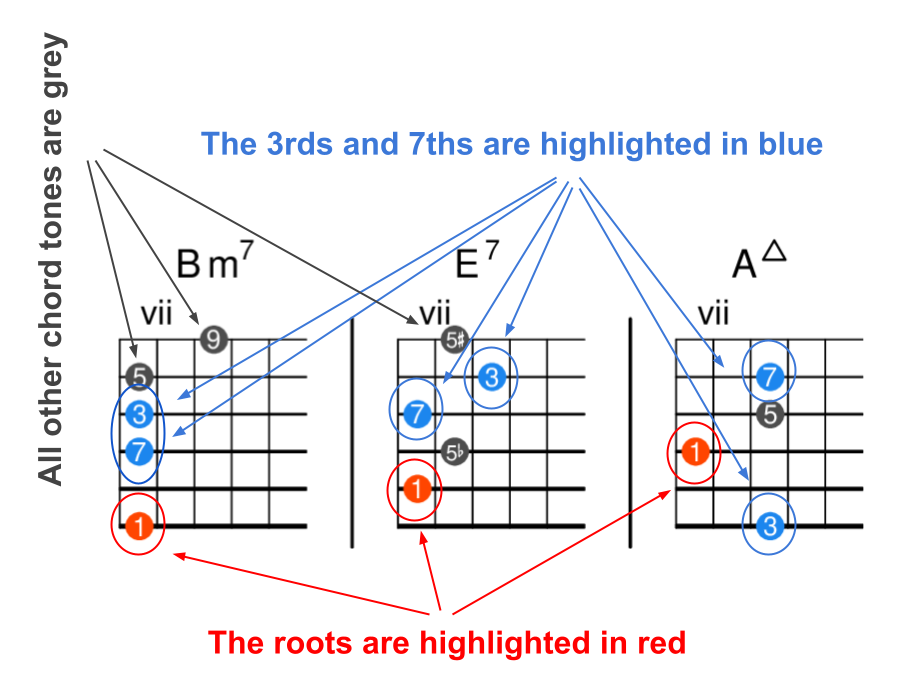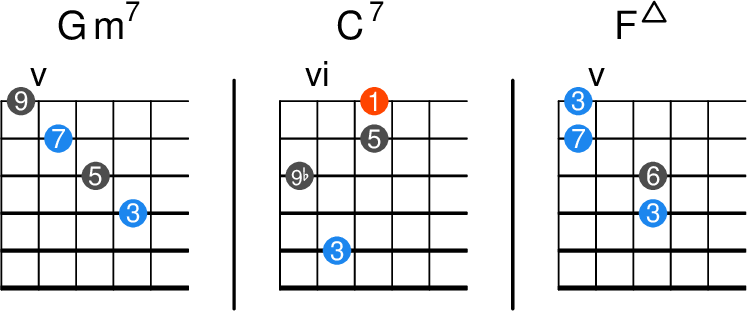Guitar Chords
The Guitar Chords section of the BopLand.org database contains numerous fret diagrams for essential chord progressions. This article outlines a few details about the notation we use.

Chords Tones
The most important chord tones of major, minor, and dominant seventh chords are the 3rd and 7th. These tones define the chord's sound, unlike the root and 5th, which are the same for all three chords and don't introduce any difference. Quite often, the chords being played are rootless, as playing the root is either delegated to the bassist or omitted.
It is handy to see chord tones on a fret diagram, so many guitar books and resources highlight the root note of a chord. It's quite common to use a different color for the root of the chord. We use a similar approach, but in addition to emphasizing the root, we also highlight the 3rd and 7th of a chord to further simplify reading in cases where the chords being played are rootless. Our color-coding rules are as follows:
- Root notes of any chord are colored in red.
- 3rds and 7ths of any chord are colored in blue.
- Any other chord tones are colored in grey.

This scheme becomes slightly less univocal for half-diminished chords, which are often substituted with m6 chords. One could argue that the most important chord tones should include the b5 as well. However, for the sake of consistency and precision, we will stick to highlighting the 3rd and 7th chord tones regardless of the chord type.
A Note on Playback
All fret diagrams in the database have a playback option. By clicking on a fret diagram, you can get an idea of how the chords may sound like.

While the notes are tonally accurate, the sound does not include details of playing with a pick, nor are any rhythmic variations included. This is done to provide an idea of how the chord sequence will sound without distortion, leaving the specifics of how the chord will be played and sound to the user.